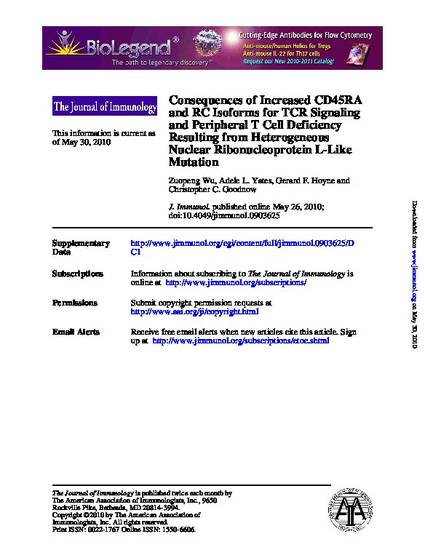
CD45 is the most abundant protein tyrosine phosphatase in the plasma membrane of T cells and serves a critical role in TCR signaling. Different CD45 isoforms are made by alternative mRNA splicing depending on the stage of T cell development and activation, yet their role remains unclear. Expression of CD45RA and RC isoforms is increased 20- to 200-fold on T cells from thunder mice with a loss-of-function mutation in the RNA-binding protein, heterogeneous nuclear ribonucleoprotein L-like (hnRNPLL), although total CD45 expression is unaltered. In this study, we test the hypothesis that this shift in CD45 isoform expression alters TCR signaling, thymic selection, and accumulation of peripheral T cells. There was no discernable effect of the change in CD45 isoform expression upon Lck phosphorylation or T cell positive and negative selection, whereas these indices were strongly affected by a decrease in the overall amount of CD45 in Ptprc mutant animals. The one exception to this conclusion was in thymocytes from Ptprcloc/loc animals with 4% of normal CD45 protein levels, where Lck505 phosphorylation was increased 25% in Hnrpll mutant cells, suggesting that high m.w. CD45 isoforms had lower Lck505 phosphatase activity in this context. In T cells with no CD45 protein, hnRNPLL mutation still diminished peripheral T cell accumulation, demonstrating that hnRNPLL regulates T cell longevity independently from its effects on CD45 splicing.
- Peer-reviewed,
- T cells,
- CD45,
- homeostasis
Available at: http://works.bepress.com/gerard-hoyne/10/
